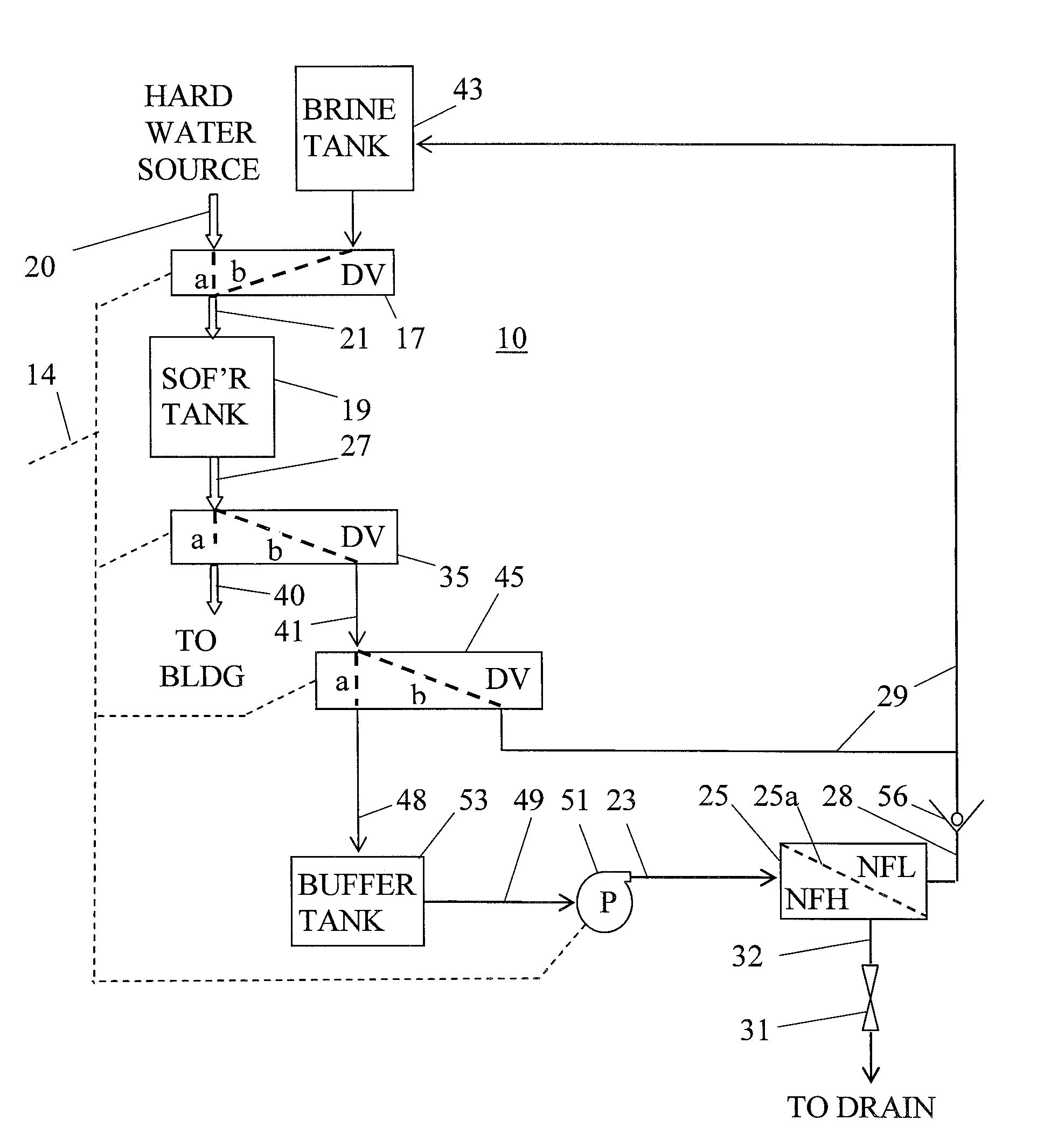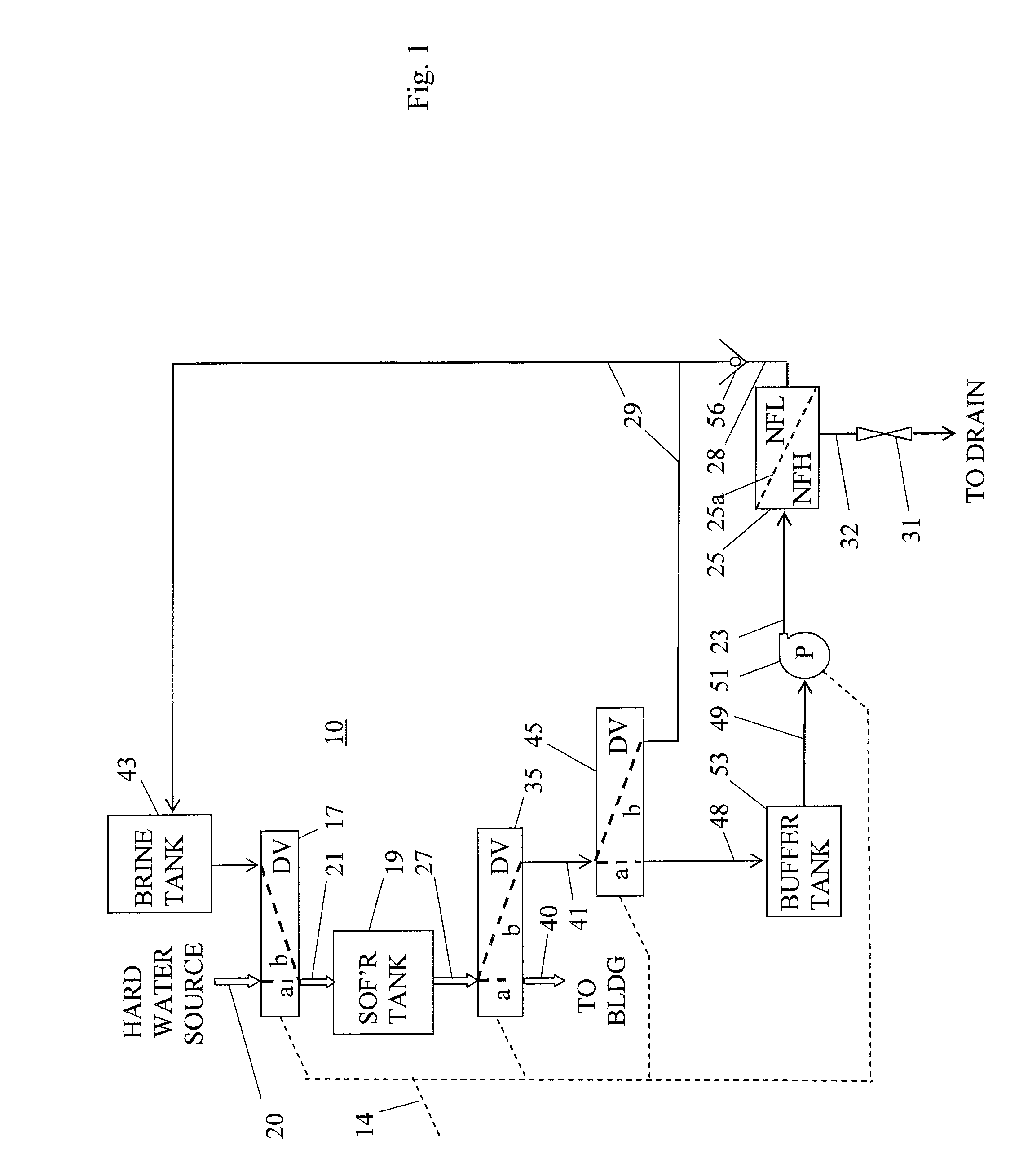Water softener system using nanofiltration to reclaim a portion of the regenerating sodium chloride
- Summary
- Abstract
- Description
- Claims
- Application Information
AI Technical Summary
Benefits of technology
Problems solved by technology
Method used
Image
Examples
Embodiment Construction
[0029]Referring to FIG. 1, a water softening system 10 according to the invention conventionally includes a connection to a source 20 of hard water to be softened such as a municipal water main or a well. During a normal operating mode or cycle, water from source 20 is directed to an input connection of a softener tank 19. Tank 19 contains resin particles on which hardness ions in the water adsorb to soften the water as it flows through tank 19. The softened water from tank 19 is then supplied to a user such as a building through a plumbing connector 40.
[0030]Also conventionally, system 10 operates in addition to the normal mode, in a regeneration mode. The regeneration mode has a first slow rinse phase during which bivalent hardness ions adsorbed onto the resin particles are replaced by monovalent salt ions by flow of brine from a brine tank 43. A fast rinse phase follows the slow rinse phase, during which salt remaining in the liquid within softening tank 19 is flushed from tank 1...
PUM
| Property | Measurement | Unit |
|---|---|---|
| Fraction | aaaaa | aaaaa |
| Fraction | aaaaa | aaaaa |
| Fraction | aaaaa | aaaaa |
Abstract
Description
Claims
Application Information
 Login to View More
Login to View More - R&D
- Intellectual Property
- Life Sciences
- Materials
- Tech Scout
- Unparalleled Data Quality
- Higher Quality Content
- 60% Fewer Hallucinations
Browse by: Latest US Patents, China's latest patents, Technical Efficacy Thesaurus, Application Domain, Technology Topic, Popular Technical Reports.
© 2025 PatSnap. All rights reserved.Legal|Privacy policy|Modern Slavery Act Transparency Statement|Sitemap|About US| Contact US: help@patsnap.com


